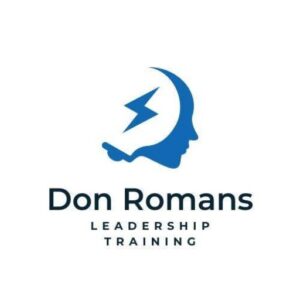Navigating the interview process can be intimidating, but one aspect often overlooked by candidates is the power of a well-crafted follow-up message. It’s not merely a courtesy gesture, but a strategic move that provides another opportunity to communicate your value. In a competitive job market, each interaction matters and this post-interview correspondence can differentiate you from the crowd. This essay intends to provide a comprehensive guide to understanding the importance of follow-up messages, structuring them effectively, and adhering to the best practices while avoiding common pitfalls.
Understanding the Importance of a Follow-up Message
Understanding the Importance of a Follow-up Message After an Interview
When partaking in job interviews, it’s critical to not only ace the conversation during the interview itself, but also how you communicate before and after it. One often overlooked but significant part of the job application process is the follow-up message. This step is a pivotal, communication-focused role that solidifies your interest in the position and leaves a lasting impression on potential employers.
Making a Lasting Impression on Potential Employers
Following an interview, employers are left to sort out candidates while factoring in their qualifications, experiences, and how they mesh with the company culture. A prompt and professional follow-up message can make you stand out among other candidates with similar qualifications. It signifies your enthusiasm for the job, demonstrates your keen attention to details, and presents you as a committed individual.
Influence of a Follow-up Message on Employer Decisions
The follow-up message is not just a mere courtesy act; it serves as a discerning factor between candidates. This additional line of communication allows you to reiterate your interest, highlight your qualifications, or address anything that wasn’t covered during the interview. It also gives you a chance to make a case for why you would be an asset to the company, something that may sway a decision in your favor.
Timing and Content of Follow-up Messages
Typically, a follow-up message should be sent within 24 hours of the interview while it’s fresh in both parties’ minds. Using this opportunity, candidates can clarify anything necessary, thank the interviewer for their time, and express their eagerness for the potential role. The message serves as a thank-you note, following etiquette and basic professionalism, but it can also reinforce your key skills and potentially address any reservations the employer might have about hiring you.
As we navigate the ever-changing dynamics of professional interactions, sending a follow-up message after an interview continues to be a crucial step in the job application process. The benefits extend beyond simple compliance with job seeking norms — it can help you stand out and leave a memorable imprint, enhancing your chances of landing the job.

Structuring Your Follow-up Message
Structuring Your Follow-up Message After an Interview
The key to crafting an effective follow-up message after an interview is maintaining professional decorum while expressing gratitude and interest in the position. Here is how to structure your follow-up message:
The Greeting
Address the interviewer by their name. If multiple people interviewed you, send a personalized message to each of them, focusing on the different parts of the conversation you had with each individual.
Expressing Gratitude
The first paragraph should express your acknowledgement and gratitude for the opportunity to interview for the role. You can write something like, “I wanted to extend my gratitude for the opportunity to interview for the [Job Title] position. I enjoyed learning more about [Company Name] and the role.”
Reaffirming Your Interest
After expressing your appreciation, it’s essential to reaffirm your interest in the position. Cite specific aspects of the job or the company culture that appeal to you based upon what you learned during the interviews.
Addressing Any Issues or Additional Information
If there were any points during the interview that you feel were not sufficiently addressed or require further clarification, this is where you address them. Similarly, it’s also an opportunity to provide additional information that wasn’t discussed during the interview.
Concluding With a Positive Note
Wrapping up your message with an optimistic finish can leave a lasting impression. Express your enthusiasm once more for the job opportunity and anticipation for the next steps, stating that you look forward to any feedback or updates.
Creating a well-written follow-up message after an interview shows initiative, interest, and respect. With the right balance of gratitude, interest, and anticipation, your follow-up message can potentially impact the final decision of the hiring process.

Best Practices and Common Pitfalls
Best Practices for Follow-Up Messages After Interviews
Writing a follow-up message after an interview is a delicate process with many best practices to consider for success. First and foremost, timing is important. The best time to send a follow-up message is 24 to 48 hours after the interview. This shows enthusiasm without appearing desperate or pushy.
In terms of content, the message should thank the interviewer for their time, reaffirm your interest in the role, and highlight a key discussion point from the interview that left an impression on you. This shows your attentiveness during the interview and emphasizes your fit for the position.
Understanding the tone is essential in crafting a strong follow-up message – it should be professional yet warm. Adopt a formal tone, but remember to inject a bit of your personality to avoid sounding robotic.
Common Pitfalls in Follow-Up Messages
The most common pitfalls in follow-up messages include being overly lengthy or verbose, and being too casual or informal. Remember, this is not an opportunity to reiterate your entire resume or qualifications.
Instead, keep the message brief. Two to three short paragraphs should suffice – thank you paragraph, recap paragraph (where you touch on a key discussion point) and a closing paragraph expressing eagerness to hear from them.
Avoid using slang or overly friendly language, stick with formal English. Even if the interviewer was friendly and casual, your response should remain professional.
Importance of Politeness and Brevity
Courtesy goes a long way when communicating with potential employers. It’s important to start by addressing the interviewer by name, and closing with a polite sign-off like “Sincerely” or “Best Regards”.
Brevity is equally crucial in follow-up messages. While it’s important to highlight a key conversation point, there’s no need for lengthy explanations or narratives. Keep your point concise and impactful.
Avoid Over-Persistence
Being over keen can harm your chances just as much as not showing enough interest. If you don’t hear back after your initial message, it’s appropriate to send another follow-up a week later. However, if there is still no response, do not keep messaging, as it might be perceived as desperate or pushy.
In conclusion, follow-up messages are a careful balance of politeness, brevity, and timing. Strike the right tone with a mix of professionalism and enthusiasm, and you’ll stand a good chance of leaving a lasting positive impression.

Photo by patrickian4 on Unsplash
Mastering the art of the follow-up message is an investment in your career journey. It’s more than just a formality; it’s a method of asserting your potential and highlighting your unique fit for the role. By understanding the necessity of post-interview correspondence and knowing how to craft one effectively, you can enhance your personal brand and increase your chances of securing the job. With the provided guidelines on structure, best practices, and pitfalls to avoid, you are now prepared to take this significant step with confidence and make a memorable impression on potential employers.

